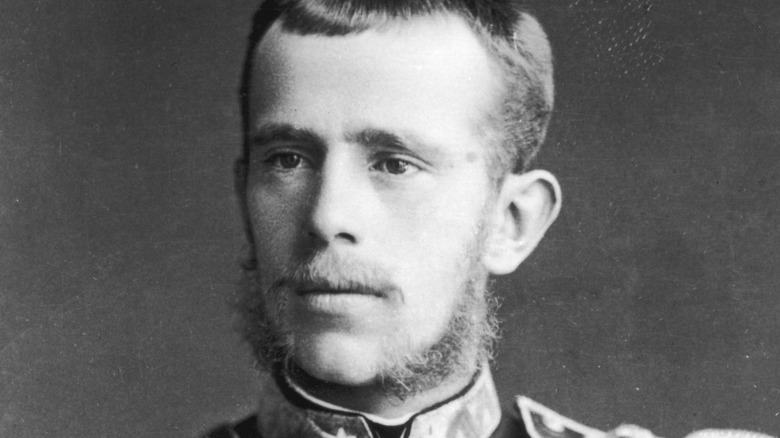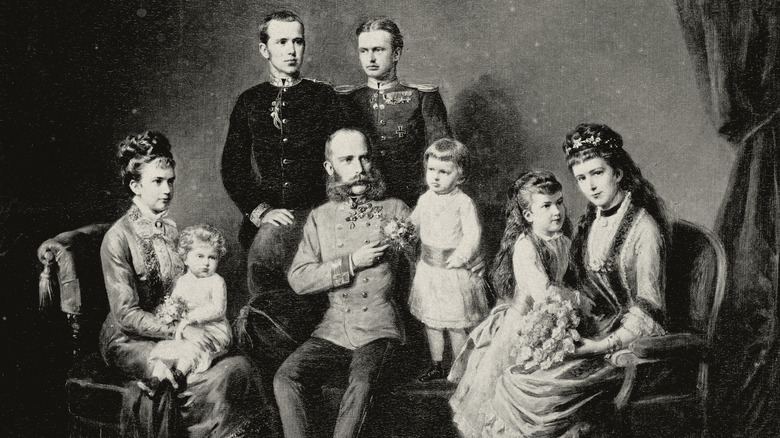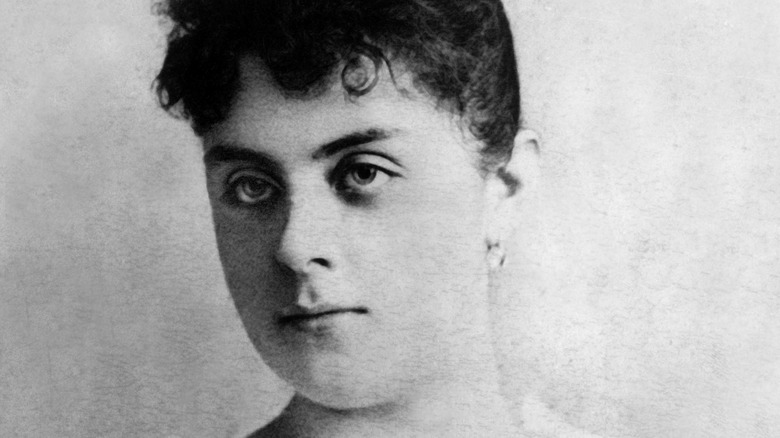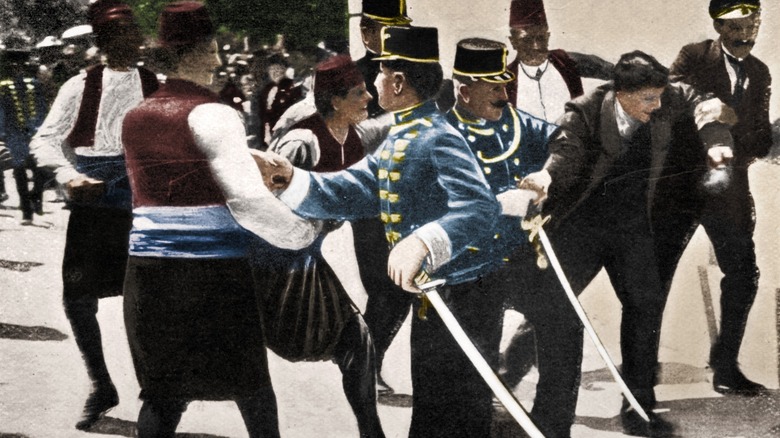The Tragic Death Pact Of The Rudolf, Crown Prince Of Austria And His Mistress Explained
It's the story of a suicidal pact that might have led to World War I. In 1889, the year of his death, Archduke Rudolf was the 30-year-old crown prince of Austria and heir to the Austro-Hungarian throne. His father, the Habsburg Emperor Franz Joseph, was deeply conservative, and ostracized Rudolf from government decisions.
Franz Joseph also forced his son to marry the Belgian Princess Stephanie, the daughter of Leopold II, according to Britannica. Their marriage was not a happy one and Rudolf was routinely unfaithful, taking on multiple mistresses. Though Stephanie and Rudolf had one child, a daughter, his philandering eventually gave his wife a sexually transmitted disease that rendered her infertile, according to History of Yesterday. He and one of his mistresses, the 17-year-old Baroness Maria Vetsera, were found dead of gunshot wounds in a hunting lodge Rudolf owned in the Austrian town of Mayerling. From the notes that the couple left behind, it was deemed a murder-suicide.
The event shocked Europe, and led to a succession crisis in Austria-Hungary. It also has spawned a number of alternate theories. Did the crown prince really shoot himself and his lover — or did something stranger occur?
Cover-ups and dark rumors
When the bodies of Archduke Rudolf and the baroness were discovered, the royal family initially said that the crown prince had died of a heart attack, according to History of Yesterday, only revealing the true story after the media uncovered the grisly details. The family continued to try to rehabilitate Rudolf's reputation, however, even convincing a doctor to write a certificate saying that he was not in his right mind at the time he committed suicide, according to The World of the Habsburgs. This was necessary to ensure that Rudolf could receive a church burial alongside his other esteemed family members. Maria Vetsera, meanwhile, was given a quiet burial far away from the Austrian prince. Soon after, the lodge at Mayerling was turned into a convent, with nuns tasked with praying for the repose of Rudolf's soul.
For more than a century, rumors proliferated that the murder-suicide was not as it appeared. For the 100th anniversary of the scandal in 1989, The New York Times recounted several alternate theories. Some said that Rudolf had only killed himself after Maria Vetsera had died in a failed abortion. Others held that Rudolf and Maria were in fact murdered, perhaps by Vetsera's relatives or political extremists. It was a dangerous time for European royals — less than ten years after Rudolf's death, his mother would be killed by an Italian anarchist, and his father survived an attack by a Hungarian radical several decades prior.
'Please forgive me for what I've done'
The prevailing theory remains, however, that Rudolf and his mistress agreed to kill themselves in a suicidal pact — a claim that was bolstered in 2015 when the Austrian National Library discovered Vetsera's goodbye notes to her family members. "Dear Mother," the letter began, as translated in Business Insider. "Please forgive me for what I've done. I could not resist love. In accordance with Him, I want to be buried next to Him in the Cemetery of Alland. I am happier in death than life." Rudolf's farewell letter to his wife had previously been located.
The death of the two lovers, however, was far from a "Romeo and Juliet" story. According to Brigitte Hamann, who wrote about the Mayerling incident in her book "Rudolf, Crown Prince and Rebel" (per The New York Times), Rudolf had been focused on suicide for several months before he did the deed.
The succession crisis and World War I
According to Hamann, Rudolf initially asked a different mistress, the actress Mitzi Kaspar, to join him in the death pact (via The New York Times). She refused, and so he moved onto the more impressionable Maria Vetsera. That didn't stop him from sleeping with Kaspar the night before he committed suicide, according to some sources (per History of Yesterday). Historians today largely believe that political alienation, more than the love of a woman, was the driver of Rudolf's behavior.
Ultimately, the impact of Vetsera's and Rudolf's violent deaths didn't end with them. When Rudolf died, the heir to the throne became his uncle, Charles Louis, who died of typhoid fever less than a decade later. Succession then passed to Charles Louis' eldest son, the Archduke Franz Ferdinand, whose assassination in 1914 would trigger World War I.
If you or anyone you know is having suicidal thoughts, please call the National Suicide Prevention Lifeline at 1-800-273-TALK (8255).



